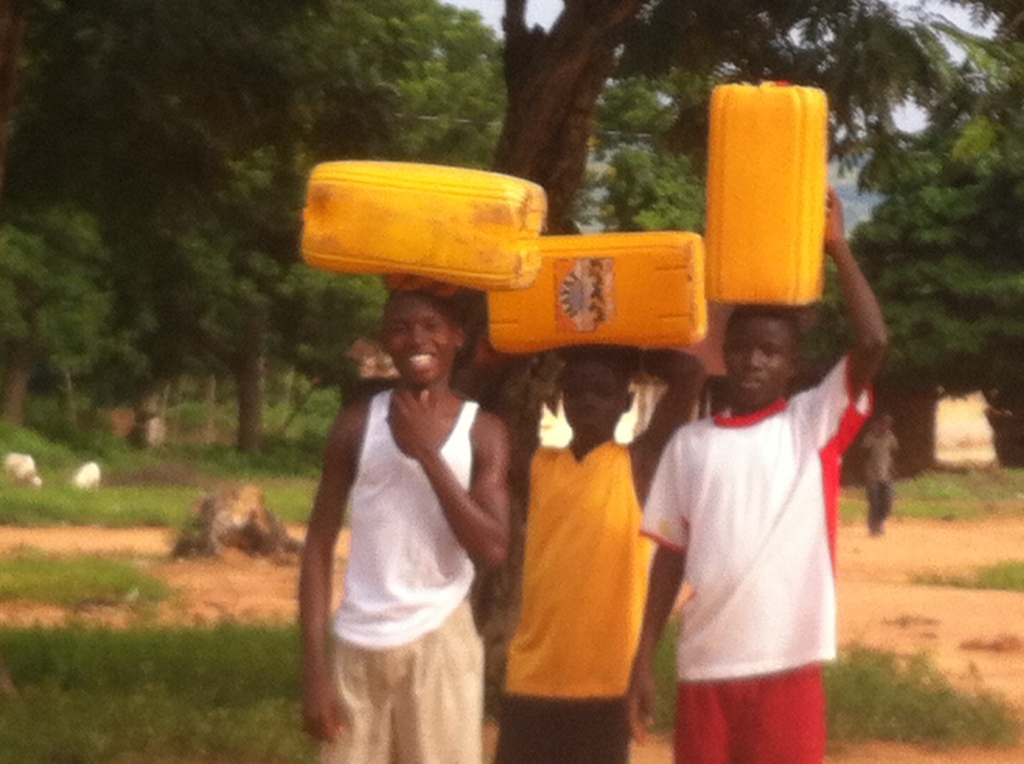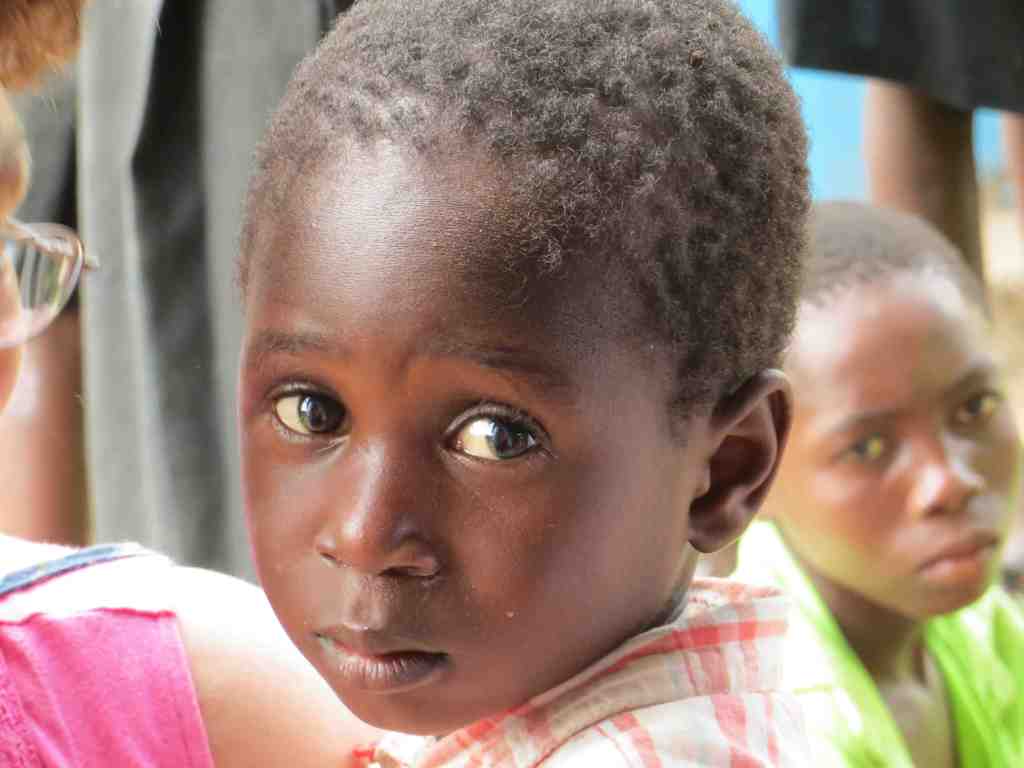A recent post copied (with permission) from the blog by Joe Sesil, who joined our July 2012 team.
You can see the entire post as well as learn more about Joe’s world-wide water tour at the following page: JOE’S BLOG PAGE
***
AOV – The Water Project
YAY!! – Essentially back in sequence and on topic! – At least I am back to being in the same continent that I am writing about. I am typically up to a week or two behind, as many of my FB friends will know. This week for example I am physically in Cape Town, South Africa, which is amazing. It is the end of winter and just the start of spring, so weather is a bit dodgy, but seeing I found an apartment for the week looking out over the Atlantic Ocean, Table Bay and Robben Island, – and chance to update the blog for the water projects I have been working on over the past month – I have no complaints!
When I first arrived in Africa, I had a chance to fill you in, in a couple posts, on Adopt One Village (AOV), the group I worked with on a water project in Ghana, but I did not really give you much, if any, detail about the project itself. In the previous posts, “Adopt One Village – A week in Ghana – Africa” and “What can I do…”, I mainly had a chance to fill you in on the background of the group and what amazing things they are doing and what a great group of people and organization they are. – This post will be brief, but transitions back to on the topic of water and the water project itself… the real reason I was there – and why I am on this journey overall!
The village of Yaw Tenkorang has approximately 800 people making up approximately 200 to 250 homes and families. The village, thanks much to the work by AOV has its own school and medical clinic and other things; like of course a soccer field. But currently due to a lot of circumstances, there is no electricity, no running water, no proper sanitation other than a group outhouse which is up the grade from the village and the school service as the bathroom. The closest town with what you would consider traditional services is Abetiti-Kwahu, approximately 10 km away and where we all stayed at the Presbyterian Center. The closest full service town, where you could coordinate getting well supplies, a hand pump, piping, fittings and couplings, would be in Accra, a five-hour drive away.
The village does have a small river that runs around it and has two access points where the water ponds, each about a kilometer or two plus away from the village center in opposite directions. This is where the women and children of the village go to do laundry and each day ’fetch water’ for cooking and cleaning and the such for the village.
Thanks to some attention given to this community a couple of decades ago there were two wells put in, in the early 90′s by World Vision, close to the stream and the two watering holes. But one of the wells was broken, from earlier investigations, believed that heavy silt had clogged the screen or the well itself had caved in on itself and the pump. The other well was said by the community to have a bad taste, it would turn red when it sat for a while and that their teeth would stain when used the water for drinking as well as their clothes when used for cleaning. So, essentially neither of the wells were in use and had not been used for the past five plus years.
After getting to the site, it was determined pretty quickly that the well that had the bad taste was high in iron and the well that was not operating, the pump had an electrical issue and the community did not know how to fix, so the solar panels that had been installed had been removed along with wiring and metal and items of value and the 180 feet deep well was left dormant.
As you looked at the system World Vision had put in, they had obviously done a lot of research and had a good plan. Both were located in areas where the water table and availability of water were high. One was installed closer to the fields and crops with the apparent intent to be used for irrigation and the other was installed closer to the village, but still away from potential contaminants from the septic system up gradient of the village. The second well, we learned was put in at a greater depth, assuming to find water with lower levels of Fe and it was equip with a storage tank, cascading aeration system, settling basins and a sand filter system installed on it… obviously this second well was meant for domestic use. – Great plan and truly a very nice installation.
We were able to confirm a lot of this with the chief and one guy who seemed to have been trained by the WV people back in the 90′s. Great people and they recalled a lot, from depths of wells and how the system operated with a control that would kick on the pump based in the elevation in the storage tank and how it was powered by the solar panels. What they did not know about was how the panels worked and the any maintenance for the wells, the treatment system, the solar panels and or the battery storage cells. They did know that after a number of years of operating really well, it started to only run on really sunny days at the high point of the sun, and soon after, not at all. The villagers not knowing what to do, went back to using water from the pond. They tried the water from the further point from the village, by the crops, but that had a bad taste, so the pond was the best way for them to access water.
I am no genius, but even I could see the fatal flaw in the original plan – No follow through, no empowerment, no ownership, seemly little team work and joint involvement. I don’t want to find fault in WVI, they do some amazing work and projects to help a lot of people in need. But in this case, at this time, they seemly had a big donor via the Conrad Hilton Foundation, who had given a lot of money to put in a lot of wells to provide a lot of people access to clean water. – Which is very positive as well. No fault of CHF either, I am sure their intentions were good and their goals nobel. But at some point it appears that the goal of installing xxx amount of wells in xxx amount of time with the given money was determined to be the way of rating a successful project, and there does not appear the goal remained as it should have to provide a long-term sustainable solution for the people they hoped to help. Or at least it does not appear that there was one that worked or was followed through on.
It reminds me of an article I read, I believe in the Economist, about an organization that had set up a goal to constructed a 100,000 new wells over a 10 year period. After the first year they had met their goal of 10,000 new wells, which they reported their success to the board and in turn they all celebrated and continued on the second year of putting in another 10,000 more new wells. After five years they were at 50,000 new wells and champagne was being poured as everyone patting each other on the back. Although at some point, they were starting to noticed that people we getting sick, so they tested the new wells and identified that some were contaminated. – They marked these contaminated wells with red paint to let people know that these wells were contaminated and continued on constructed additions new wells. They had a goal and had to meet that goal…right – So, after 10 years they finished and had installed all 100,000 new wells – and they celebrated and reported their great success. – But in the process countless people had died or had birth defects due to the contamination. Another outcome of “meeting the goal”, was that any one who had a well painted red in their yard were ostracized by the community for being “unclean”, which brought about a large influx of prostitution to the area by the women who lived in homes with red wells, since no one would marry them or hire them for anything else. – Not exactly what the community needed or wanted in the long run.
Extremely sad story and obviously the extreme, but sadly a true story that highlights the concern on how setting your sights on an organizations goal and the potential corporate bureaucracy that can come along with it and bring that into the development world and in turn focusing on the project more so than the people and the partnership with those people to meet what they need is the critical thing at hand for a sustainable long them helping result.
In our case of course it was not as drastic, but due possibly to following an agenda to meet a goal that did not keep the end-user in the loop, not empowering them and giving them involvement and ownership in the end goal of a sustainable solution to their specific needs, the our village was left where they were 20 years ago.
I will note that this seems to have been a problem in both cases, but both are from a number of years ago and currently the NP / NGO world seems to have a much better understanding on the importance of community involvement. I will also note, that I also have no room to talk; seeing that when WVI and CHF were working hard doing these projects in Ghana, I was more than likely in Dewey, drinking a bucket of Rocks at the Starboard or trying to make my way out of the Cork with a Bud Light Promo Surf board over my head…
The positive ending to this story is that AOV did step in and see the issue and set in path working with the community a solution that can resolve their water issues. While I was in Ghana I had a chance to work with these good people of the village and of AOV and we put into motion the rehabilitation of the wells, replacement of the electric pump with a new hand pump that is more reliable with less long-term maintenance required. We are upgrading the treatment system to also be sustainable on the domestic well. On the agricultural well, we are working on ideas with the community for installing a drip irrigation system and possible addition of a green house. A couple of items based on lessons I learned while working on a project in Kenya since the Ghana project (almost caught up!). Overall, we are very lucky for what WVI and CHF had done here many years ago and can put it all to good use for the future needs of the community, while working with the community – Thanks to all involved!!




